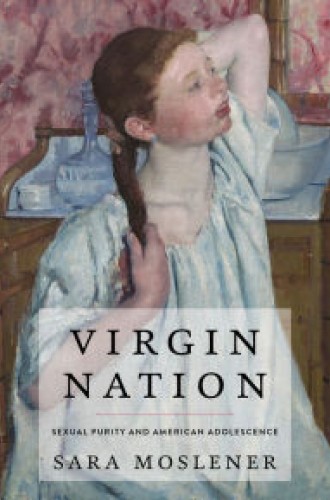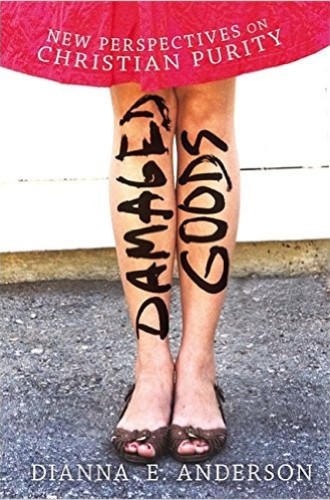Pure Christian sex?
The summer after my junior year of high school, in the mid-1990s, my German class traveled to Bavaria for a month of cultural and language immersion. I remember passing around a magazine, the German equivalent of Seventeen, as we ignored our grammar instructor.
To my surprise, our German counterparts were offered a two-page, full-color spread featuring the sexual “position of the week,” complete with explanatory photos. The spread was, in a word, eye-opening, and not simply because of the nudity. What impressed me was how the mores for adolescent sexuality in Germany differed from those back home, where the assumption was that teens should be abstinent and should meditate deeply on the meaning and fact of their “virginity.”
Read our latest issue or browse back issues.
Perhaps it goes without saying that Americans are more apt to presume virginity because our levels of religiosity and practiced Christianity are higher than in Western Europe. It’s become a truism to blame our Puritan forebears for our moralizing about sexuality and our discomfort with talking frankly in public about it. Two recent books, though, take up the distinctly American discourse on sexual purity and premarital abstinence among Christian subcultures and complicate that story in interesting and critically important ways.
Sara Moslener documents the ways in which adolescent sexual purity became tied to various Christian political concerns about the moral health and strategic power of the United States during the 20th century. She begins her study at the turn of the last century, with the move toward women’s suffrage and the rise of Moody Bible Institute and the Young Men’s and Women’s Christian Associations.
My anachronistic biases rendered Moslener’s opening chapters confusing to me. I couldn’t understand the allegiance between suffragists and Christians concerned with purity. Why would first-generation feminists work with early fundamentalists? Despite the differing ends they sought, they shared common ground: both groups were concerned with social order and asserted a particular moral vision with racist undertones; both insisted on a gender essentialism that emphasized women’s innate purity and virtue. They parted ways when the suffragists insisted that women’s virtue and responsibility for the family’s morals was a valid rationale for granting them the vote, while the fundamentalists insisted that these virtues meant women ought to be protected, which justified the reassertion of spiritual and political headship of men over women.
Moslener looks at the ways in which sexual purity became a part of the anticommunist rhetoric of Billy Graham’s preaching and other midcentury evangelical efforts. In the midst of the newly emerging youth culture, the call to purity was delivered at large-scale events that were part entertainment, part rally. Atheistic communists were subverting the God-given order of creation, the argument went, and Americans needed to stand firm in their opposition. According to several historians—or, perhaps more accurately, philosophers of history—civilizations rose and fell on the basis of their moral commitments. Teenagers and young adults were directed to protect their nation by protecting their own virtue.
With the sexual revolution of the 1960s and ’70s, a new, therapeutic approach emerged. Adolescents were encouraged to swear off sexual activity because of the benefits of abstinence to their health, well-being, and relationship with God in Christ. Moslener demonstrates that the discourse of fear and the therapeutic approach worked in tandem in the True Love Waits campaign that appeared in the 1990s. True Love Waits and similar programs had wide public impact, seen in the rise of abstinence-only sex education in U.S. high schools and in the approach to sex, marriage, and childbearing in the 1996 welfare reform act.
Dianna Anderson takes up the conversation about sexual purity in America at the historical moment where Moslener’s book ends, and it takes a quite different approach. Damaged Goods straddles multiple genres: memoir, feminist critique, manifesto, biblical hermeneutic, and nascent theological sexual ethics. Anderson came of age in the midwestern evangelical purity culture around the turn of the millennium. She writes with lingering guilt for having once shamed a friend who revealed his sexual history to her, expecting that it would render him an unworthy partner. Those days, though, are long gone. Anderson documents the damage wrought not by premarital sexual activity or rejection of heteronormativity, but by the marriage of therapeutic approaches to sexuality and the theology of fear that Moslener describes.
Anderson’s book is not fully compelling theologically or ethically. Christianity Today criticized it for suggesting that almost anything goes in sexual morality. But Anderson does not so much call for an open market of sexual expression as exhort young adult Christians to do the work of constructing a sexual ethics for themselves—an ethics that reflects their commitment to God and to wholeness, that honors their bodies and the bodies of their partners, and that is critical of those who would oppress or marginalize others.
Anderson is at her best when she is deconstructing the culture in which she was raised, especially the ways in which the norms of gender essentialism debase both men and women. Her reflection on her own journey is remarkably candid and reveals her vulnerability.
Human sexuality can be a complicated and fraught topic, but these books, much like my teenage excursion overseas, remind us that what makes it complicated is not always what we might expect. Sometimes sexuality is complicated by embarrassment or uncertainty, sometimes by culture or biblical hermeneutics, and sometimes by patriarchy and nationalism.







